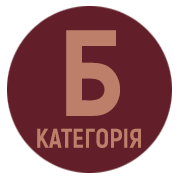METHODS FOR THE FORMATION OF COLORONYM WITH A COLOUR COMPONENT GRÜN IN A GERMAN LANGUAGE JOURNALISTIC TEXT
DOI:
https://doi.org/10.24919/2522-4565.2021.45.28Keywords:
compounds, coloronimy, grün, meaning, GermanAbstract
According to Wierzbicka basic colours have prototypical meanings. Thus, there is a conceptual association between e.g. the colour red and fire, green and “things growing out of the ground”, blue and the sky, yellow and the sun. The colours white and black can be referred to as different shades of light. Our interest lies in colour compounds with the mentioned colours or shades of light as latter part and with a describing first part of the compound in modern German language. Our aim is to study these prototypical meanings among the colour compounds grün. This article discusses the derivation derivational сoloronymiv in journalistic text of the German language. It can be noted that the productivity of compounding as a way of formation of new nominations is increasing, and is now compounding is the most productive method by which new names formed. Compounds are formed of at least two stems, and can combine any parts of speech (noun + noun, adjective + adjective, verb stem + noun, etc.). There are generally two types of compounds that can be identified: the determinative compound and the copulative compound. The determinative compound is the most common one. It is made up of a semantic head, the right-hand component of the lexeme, which also determines the grammatical category and gender of the word. The meaning of this head is restricted by the qualifying element that precedes it. Less common is the copulative compound. This type of compound is characterized by a coordinate, rather than a subordinate, relationship between the components. The copulative compound always combines the same parts of speech (e.g. adjective + adjective, noun + noun). In this article compounds are formed on the model of «color adjective + noun», although there are other «color adjective + verb», «color adjective + adjective». Coloronym in the German linguistic culture have a constant set of portable values that describe a variety of objects. Almost all coloronymy are polysemy, so their value is specified, or in certain combinations of usual, or in the context. Due to the color component of the compound become figurative meaning. All compounds are formed by metaphorical or metonymic rethinking whose meaning does not always coincide with the lexical interpretations. All difficult words associated with a person, with the description of its external data or a characteristic of its activity. In German compounds with color component grün used most often with a positive value.
References
Вашунин В.С. Субстантивные сложные слова в современном немецком языке. Москва : Высшая школа, 1990. 159 с.
Вежбицкая А. Язык. Культура. Познание. Москва : Русские словари, 1996. 416 с.
Глушак Т.С. Функциональная стилистика немецкого язика : учебное пособие. Минск : Высшая школа, 1981. 173 с.
Кукушкина А.Т. Теоретическая грамматика немецкого языка. Морфология. Нижний Новгород : НГЛУ им. Н.А. Добролюбова, 2004. 80 с.
Степанова М.Д. Теоретические основы словообразования в немецком языке. Москва : Высшая школа, 1984. 264 с.
Deutsches Universalwörterbuch. 6., überarbeitete u. erweiterte Auflage. Mannheim : Dudenverlag, 2007. 2016 s.
Fleischer W. Wortbildung der deutschen Gegenwartsprache. Leipzig : Niemeyer, 1992. 327 s.
Focus. URL: https://www.focus.de/ (дата звернення: 04.05.2017).
Spiegel. URL: http://www.spiegel.de (дата звернення: 27.05.2017).
Wahrig G. Deutsches Wörterbuch / neu herausgegeben von Dr. Renate Wahrig. München : Burfeind, 2002. 1451 s.



